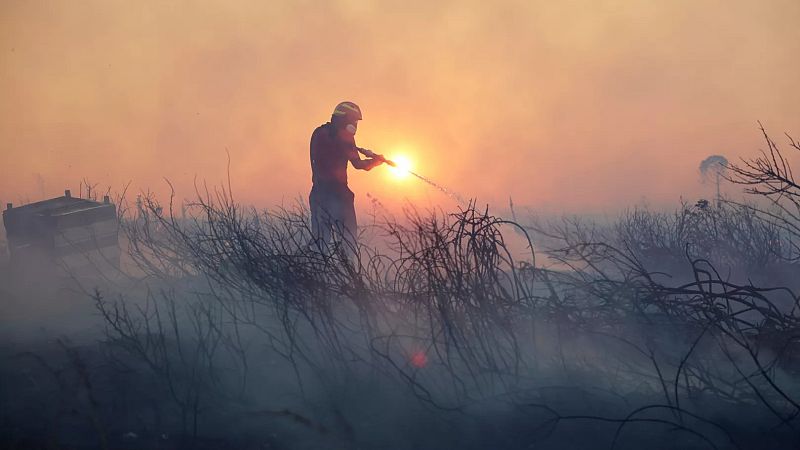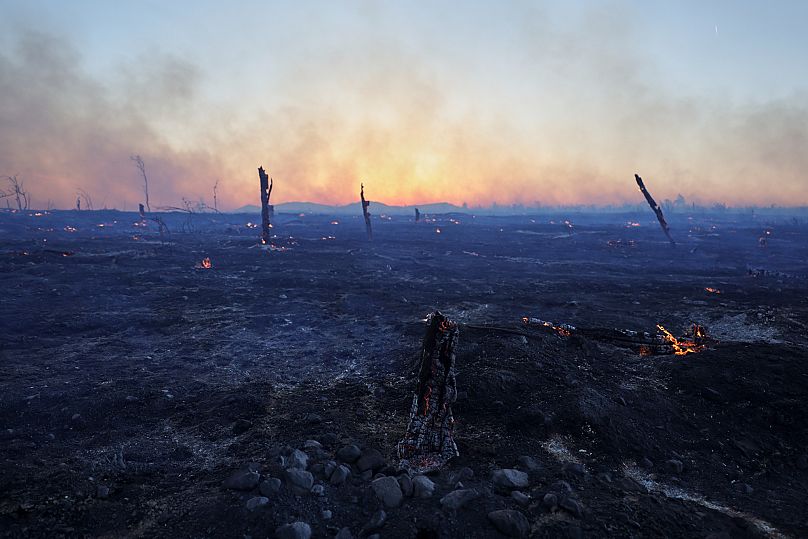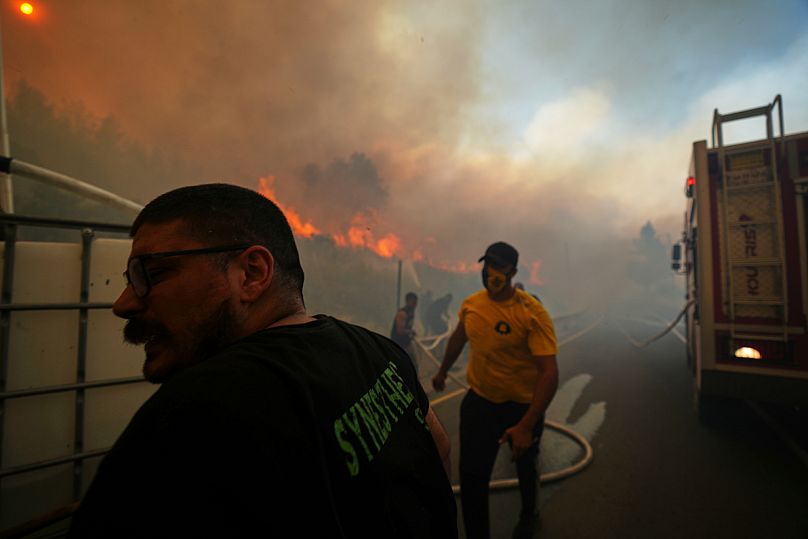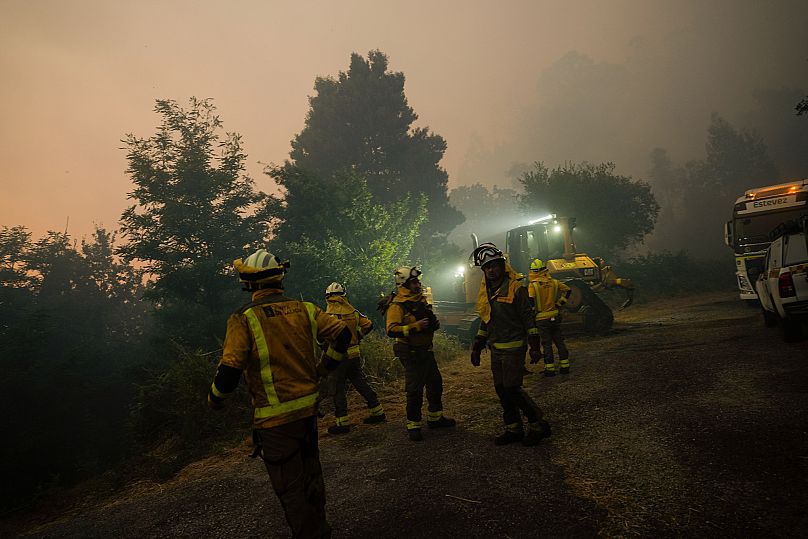
Wildfires across Europe have surged to record levels this summer, with intense blazes fuelled by soaring temperatures and dry conditions.
A total of 292,855 hectares of land have burned in the EU, according to the latest update from the European Forest Fires Information System (EFFIS) on 29 July. The total area burnt during the same period last year was 139,940 hectares, and the total so far this year is higher than the average recorded over the last 19 years.
EFFIS has detected a total of 1,339 fires larger than 30 hectares since the beginning of the year.
The Copernicus Atmosphere Monitoring Service (CAMS) says some countries have already seen the highest wildfire emissions in its 23 year data set.
High temperatures fuel fires in the Mediterranean Basin
High temperatures around the Mediterranean Basin during the summer significantly increased the likelihood of wildfires in the region, according to CAMS.
Modelling has highlighted that wildfires around the Mediterranean this summer “have been the result of an abundance of fuel and severe weather conditions, with much drier conditions driving the intensity of the fires,” according to Joe McNorton, a fire forecasting scientist at the European Centre for Medium-Range Weather Forecasts (ECMWF).
In the eastern Mediterranean, Greece and Turkey experienced intense blazes with persistent high temperatures contributing to the ongoing situation.

The total emissions from these fires are estimated to be among the highest in the 23 years since this data started to be recorded. Greece has seen the highest total estimated fire emissions since 2007, and Turkey has the highest year-to-date estimated emissions, reflecting the intensity of fires there.

Fires have been particularly intense in Cyprus, where the country reached its highest annual cumulative wildfire emissions in just two days. CAMS says this is mainly due to the wildfires that took place between 22 and 23 July, which have been described as the worst on the island in more than half a century.
Where else have wildfires been burning in Europe?
July also saw increased wildfire activity in the wider Balkan region. Emissions from blazes in Montenegro and North Macedonia were the third highest in the CAMS record. Estimated emissions in Serbia and Albania were the second highest, just behind 2007.

In southwestern Europe, large wildfires developed in southern France, Catalonia and Portugal at the start of July. Then, in the last days of the month, parts of Spain and northern Portugal have also been experiencing significant renewed wildfire activity.
From the beginning of the year until 15 July, a total of 3,370 rural fires have burned 10,768 hectares of land in Portugal, according to data released on Wednesday by the National Institute for Nature Conservation and Forests (ICNF).
This figure is three times higher than that recorded in the same period in 2024, when 3,462 hectares burned.
UK records its highest annual wildfire emissions
Further north in the UK, estimated wildfire emissions for 2025 are already the highest on record at 0.35 megatonnes of carbon.
By 20 June, the UK’s National Fire Chiefs Council said it had already responded to 564 wildfires since 1 January 2025 - a 717 per cent increase from the same period in 2024. It was also double the number of incidents as during the same period in 2022, which went on to be a record year.
CAMS says the increase in emissions has primarily been driven by the large wildfires which impacted northern Scotland in the final days of June and at the beginning of July. These fires increased the year-to-date estimated emissions for the UK to their highest level in the 23 years of CAMS data.







